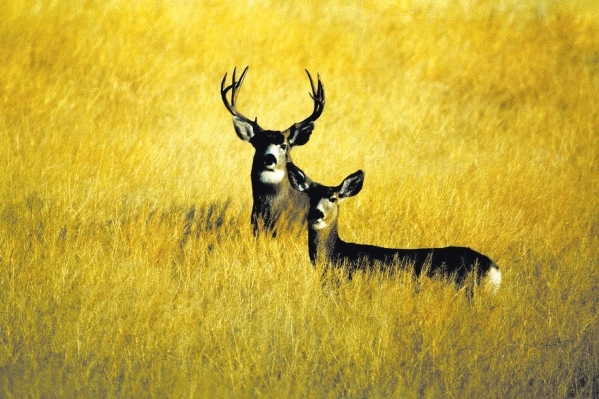Heat, rainy weather combine to frustrate deer hunters

Heat, rain and low-hung clouds thick enough to make deer hunting little better than futile.
Hunters looking for deer in Area 10 experienced it all last week, and they weren’t the only ones in that part of Nevada to do so. As a result, hunters are sharing stories of a tough hunt.
I ran into a hunter last week that had a doe tag in Area 10 during the early season.
Though he and his friends had an enjoyable outdoor experience, they came home with their tags unfilled and no venison for the freezer. He told me their lack of success wasn’t because of an absence of deer but to a lack of deer activity during the daytime hours. The deer, he said, were moving well before the sun came up. But by the time it was legal shooting time, the deer were bedded and difficult to dig out.
The weather conditions during the man’s hunt? Unseasonably warm. Something I addressed in my Sept. 30 column. Had it been on the cooler side, there was a chance the group’s hunt would have turned out differently because the deer would have been more active during the day.
Rainy weather conditions also can create challenges for deer hunters. It tends to drive all but the most dedicated hunters back to camp and the shelter offered by tents or RVs. Though deer are used to being out in the weather, if it rains hard enough, they, too, will seek shelter. While you won’t find them in a wall tent with the fire going, they will take advantage of what nature provides, and so can you.
When it rains, and sometimes when it snows, if the precipitation is heavy enough, deer and even elk will hunker down in the trees. When trees are thick enough, they create a natural umbrella or tent. Though this won’t keep an animal perfectly dry, it will help. Maximum protection is provided by trees that have low-hanging branches with somewhat of a hollow beneath them.
This concept was reinforced on a rainy afternoon during the 2013 deer hunt in central Nevada. After a quick trip to town, my friends and I opted to remain in the comfort of the truck cab and explore some two-track roads in an area we hadn’t hunted before. At one point, Don spotted a large bull bedded down under the protective bows of a thick juniper tree. It was just below the crest of a hill where the angle of the slope created a natural pocket just large enough for him to lay in.
Despite the rumble of the truck’s diesel engine, and our excited chatter, the bull did not move. He was perfectly content where he was.
A short while later, our wanderings took us down a narrow road lined with pine trees. As we rounded a tight corner, a mule deer doe suddenly erupted from beneath the bows of a tall pine. She was followed by another and then another. In all, close to a dozen head of deer came out from under that one tree. No doubt they heard us coming for several minutes, but they stayed put until the truck was within mere feet of their hidey hole.
Don’t overlook rocky overhangs or even shallow caves. During a storm, these also provide animals with shelter.
Once the rain lets up, you will want to be in full hunt mode because deer will be up and on the move, especially if they have been hunkered down for hours. They will get up to relieve themselves, grab a bite to eat or maybe just to stretch. This will give you an opportunity to fill your tag, and the wet ground will help you to move quietly.
Perhaps the best weather conditions for hunting deer involve snow. Just a couple of inches of snow makes all the difference when hunting mule deer. In the fall, the hair on mule deer changes from its red-brown coloring of summer to a dusty gray. This enables them to blend in with their surroundings. With just a couple of inches of snow on the ground, deer stand out rather than blend in. But keep in mind that it will make you easier to see as well.
When the clouds roll in thick and heavy, this is perhaps a good time to hunker down at camp and stay put for a while. It is not worth the chance of being mistaken for a game animal. You can always go back out once the clouds lift.
Whenever we leave home for a day or two in the outdoors, there are never any guarantees with the weather. What we can do, however, is go prepared for the possibilities. Not only in terms of the gear we take but also for the decisions we may have to make along the way.
Such as whether to go hunting in the rain or enjoy a cup of hot chocolate back at camp.
Freelance writer Doug Nielsen is a conservation educator for the Nevada Department of Wildlife. His “In the Outdoors” column, published Thursday in the Las Vegas Review-Journal, is not affiliated with or endorsed by the NDOW. Any opinions he states in his column are his own. He can be reached at intheoutdoorslv@gmail.com.












